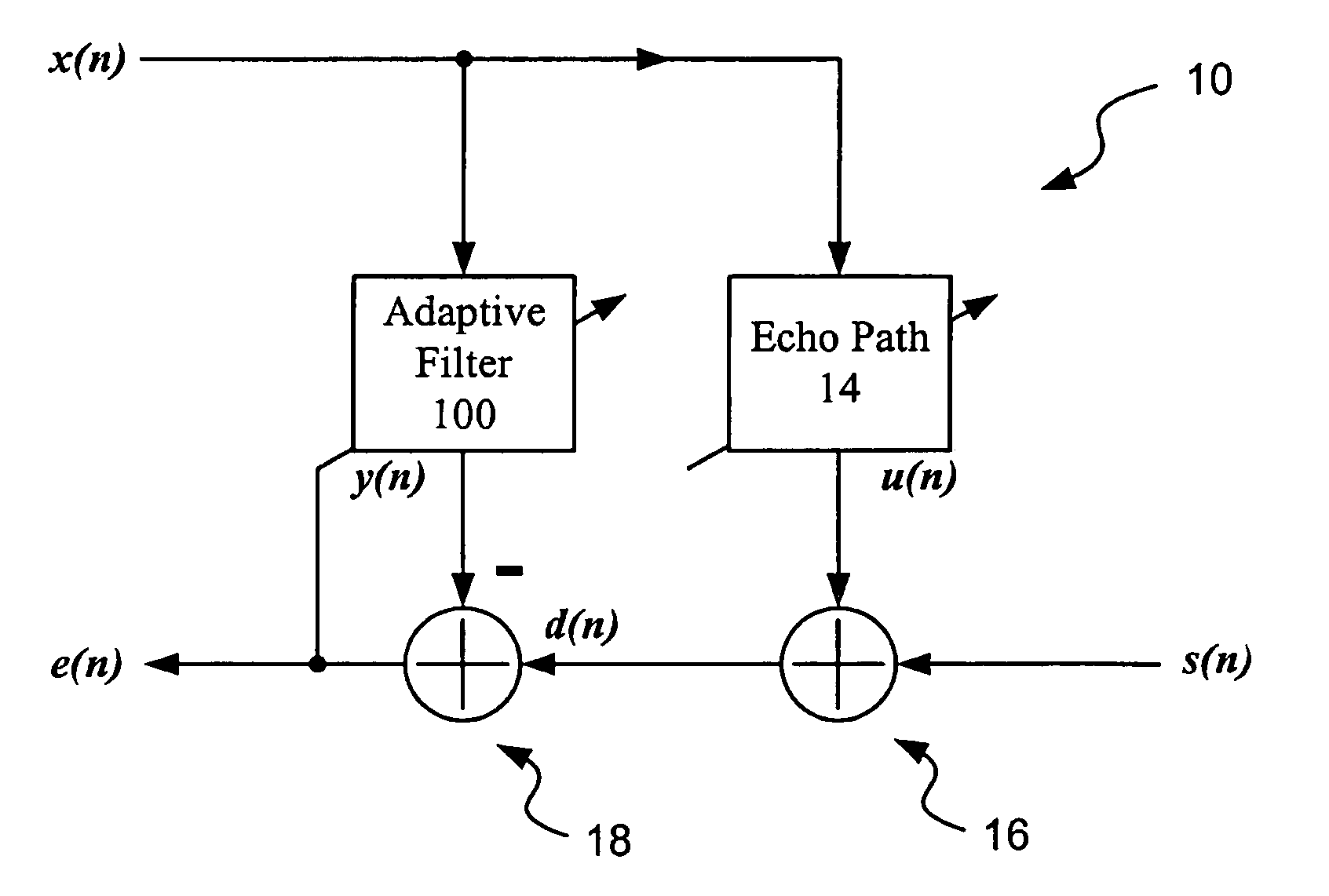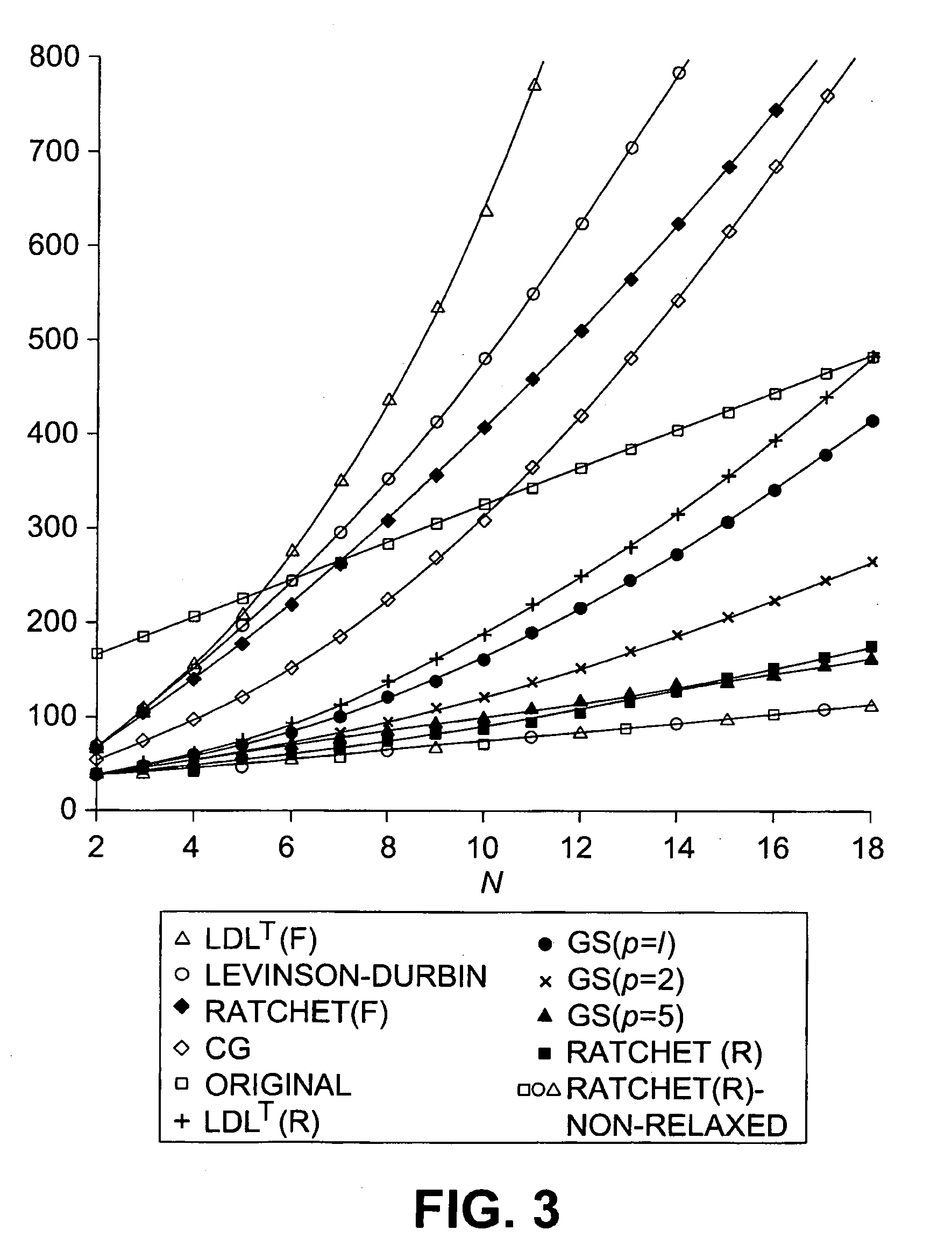Adaptive filtering using fast affine projection adaptation
a technology of affine projection and adaptive filtering, applied in pulse manipulation, pulse technique, multiple-port network, etc., can solve the problem that the original proposed fap algorithm has an intrinsic numerical problem, the complexity of the most complicated cases cannot be implemented on a commercial low-cost digital signal processor (dsp), and the numerical problem is too larg
- Summary
- Abstract
- Description
- Claims
- Application Information
AI Technical Summary
Benefits of technology
Problems solved by technology
Method used
Image
Examples
Embodiment Construction
[0020] A simplified block diagram of an adaptive echo cancellation system 10 with an embedded adaptive filter 100 is shown in FIG. 1. x(n), a digitally sampled far-end signal, or reference signal, where n-is the time index, is supplied to the adaptive filter 100 and to the echo path 14, producing an unwanted signal u(n) that is the echo of x(n) through the echo path 14. The perceived near-end signal, d(n), is a sum of the wanted near-end signal s(n), an unwanted u(n), and probably some noise, through summer 16. An echo estimate y(n) from the adaptive filter 100 is subtracted from the perceived near end signal at summer 18 to provide the echo canceller's output e(n). The goal is to let the adaptive filter 100 mimic the echo path 14 so that it produces an output y(n) that is very close to u(n). Therefore, the latter is largely cancelled by the former, and e(n) resembles s(n). Since the echo path 14 can vary over time, the adaptive filter 100 must be able to continuously learn, or adap...
PUM
 Login to View More
Login to View More Abstract
Description
Claims
Application Information
 Login to View More
Login to View More - R&D
- Intellectual Property
- Life Sciences
- Materials
- Tech Scout
- Unparalleled Data Quality
- Higher Quality Content
- 60% Fewer Hallucinations
Browse by: Latest US Patents, China's latest patents, Technical Efficacy Thesaurus, Application Domain, Technology Topic, Popular Technical Reports.
© 2025 PatSnap. All rights reserved.Legal|Privacy policy|Modern Slavery Act Transparency Statement|Sitemap|About US| Contact US: help@patsnap.com



